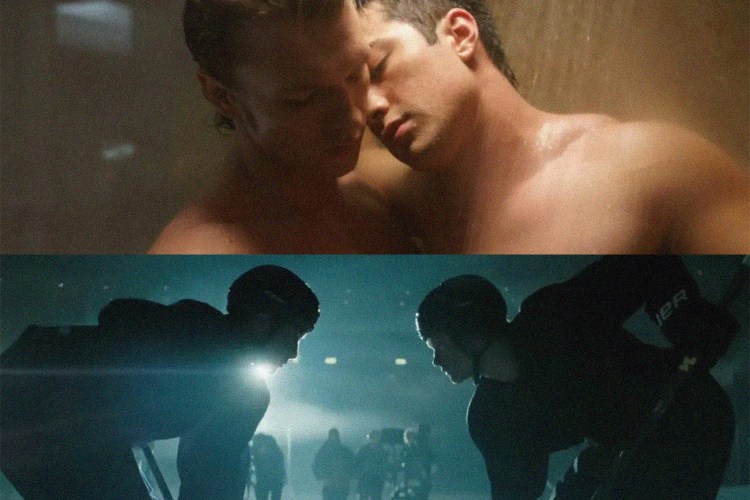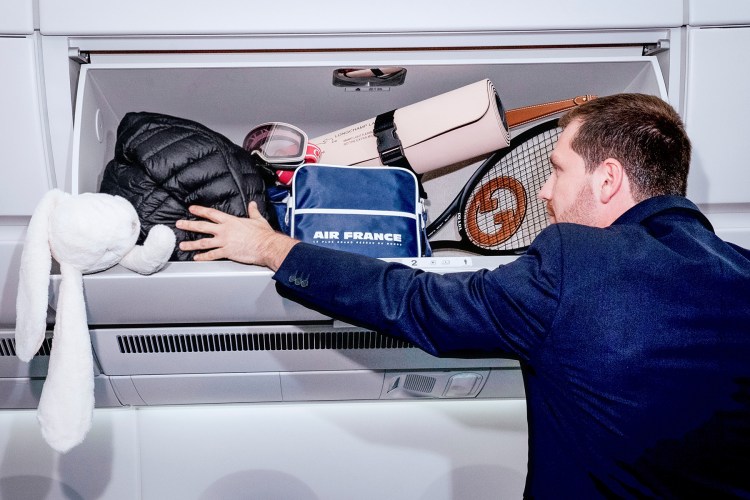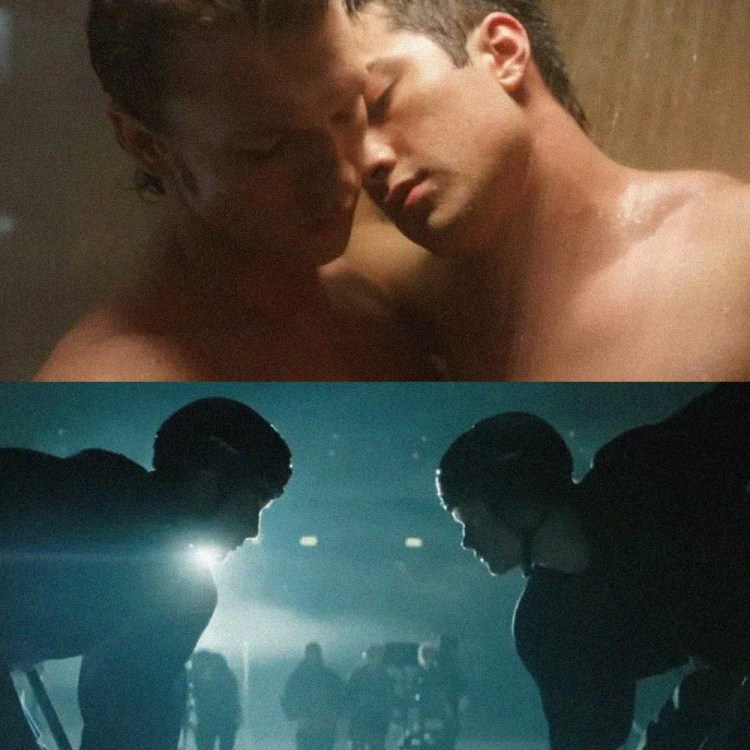There are some photographs that are so stunning and so powerful, the whole world remembers it for decades. The people in the photo become synonymous with a particular cause; they become poster children for the event or that moment in time. But sometimes, the people in the photo don’t even know this has happened — like Edith Lee-Payne, a 12-year-old girl who became the poster child for the Civil Rights Movement. In this gallery, we take a look at the true stories behind the people who became the face of the Vietnam War, the end of World War II and the feminist movement.
Afghan Girl
Afghan Girl. Flickr.Over three decades ago, Steve McCurry took one of the most iconic photographs of all time: The “Afghan Girl.”
“I knew she had an incredible look, a penetrating gaze,” he said in 2016, according to CNN. “But there was a crowd of people around us, the dust was swirling around, and it was before digital cameras, and you never knew what would happen with the film. “When I developed the picture, I knew it was special. I showed it to the editor of the National Geographic, and he leaped to his feet and shouted, ‘that’s our next cover’.”
The photo features 12-year-old Sharbat Gula, a Pashtun orphan who was at the time living in the Nasir Bagh refugee camp on the Afghan-Pakistan border. The photograph was taken in 1984, and she had no idea that her face had become an icon. In 2016, it was discovered that Gula was living in Pakistan. McCurry said that what excites him about the photograph was how impactful it was worldwide.
“People volunteered to work in the refugee camps because of that photograph,” he says. “Afghans are incredibly proud of it, as the girl is poor but shows great pride, fortitude, and self-respect. It drew attention to their plight, and inspired a lot of people.” National Geographic also set up the Afghan Children’s Fund.
Napalm Girl
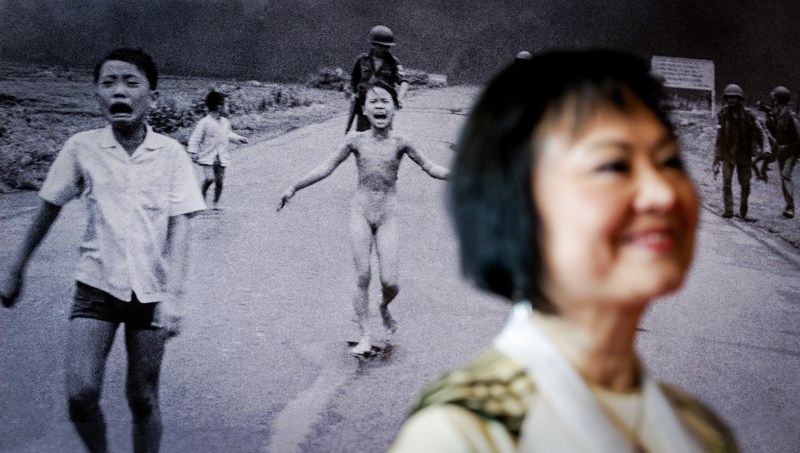
Kim Phuc Phan Thi was only 9 years old in 1972 when the South Vietnamese air force mistakenly dropped a load of napalm on the village Trang Bang, about 25 miles northwest of Saigon. There has been a lot of debate about the photograph that was taken of her as she ran naked, screaming, towards the camera. She had burns covering 30 percent of her body. The photographer, Nick Ut, who worked for the Associated Press, poured water over her body. He told Time during an interview in late 2013 that Kim Phuc was screaming, “Too hot! Too hot!” Ut took the girl to a hospital, but was told she might not survive. So with the help of some colleagues, he was able to get Kim Phuc transferred to an American facility for treatment. She ultimately had 17 surgical procedures including skin transplants and was in the hospital for 14 months. As an adult, she established the Kim Phuc Foundation with the aim of providing medical and psychological assistance to child victims of war.
The photograph became cultural shorthand for the atrocities of the Vietnam War and is one of the defining images used today to represent brutal conflict. At the time, it sparked newsroom debates about publishing nudity. Many organizations, including The New York Times, changed their policies. President Richard Nixon once wondered if the photo was fake, and Ut responded, “The horror of the Vietnam War recorded by me did not have to be fixed.”
A Kiss to End the War
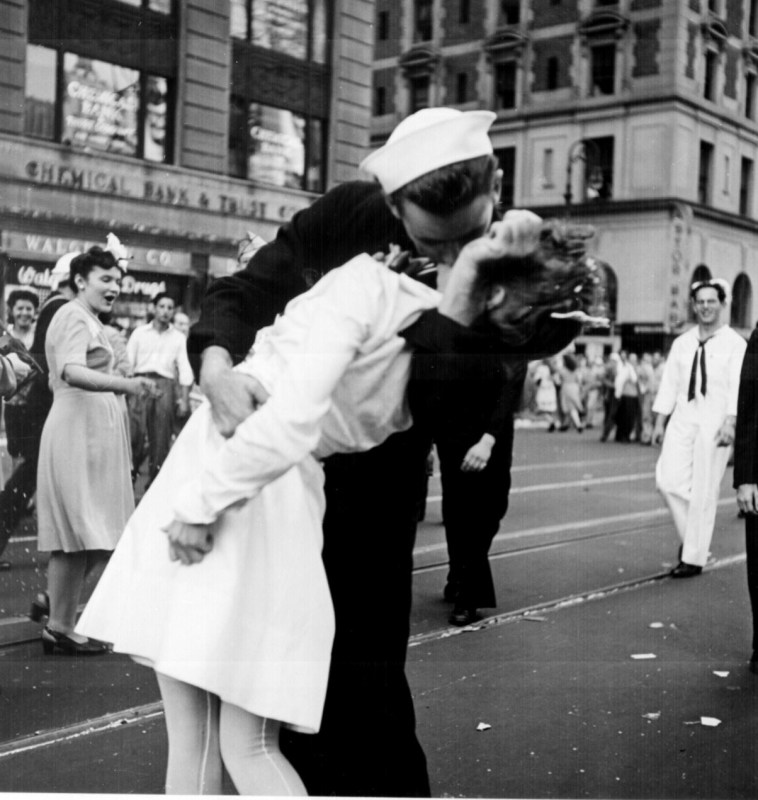
Alfred Eisenstaedt was one of the first four photographers hired by LIFE Magazine. He wanted “to find and catch the storytelling moment.” On August 14, 1945, it was announced that World War II was over, so Eisenstaedt went to Times Square to document the joyous occasions. A sailor in front of him grabbed a nurse, titled her back and kissed her. Eisenstaedt caught the moment, and that photograph has become one of the most famous of that generation. It is the most frequently reproduced picture of the 20th century. But the story behind the kiss is less known. The New York Post writes that the man in the photo, George Mendonsa was a 22-year-old Navy quartermaster on leave from the Pacific theater. He was actually on a date with another woman, Ria Petry, who you can see in the back of the frame. They were at a movie when word spread that the war had ended. They went to celebrate at a bar, and then went to Times Square. When Mendonsa saw the woman in the nurse’s uniform, he thought about how three months prior, nurses had helped save men who were pulled out of the water after two kamikaze planes smashed into the USS Bunker Hill. So Mendonsa ran and grabbed the woman, Greta Zimmer, and kissed her.
But here’s the thing, Zimmer was not a nurse, and though the kiss didn’t bother Petry, it bothered Zimmer. She was a 21-year-old dental assistant who was born and raised in Austria. In 1939, her parents decided she and her sisters should flee to America. They were among the last refugees to make it out.
On Aug. 14, Zimmer heard rumors the war was over, so walked to Times Square from her office on Lexington Avenue. “That man was very strong. I wasn’t kissing him. He was kissing me,” she said, according to The New York Post. Mendonsa then stumbled away — he claims he was so drunk he barely remembers the kiss. Zimmer didn’t tell anyone what happened. It wasn’t until 35 years later that the photograph became incredibly popular, and that is when Mendonsa and Zimmer recognized themselves.
Tank Man
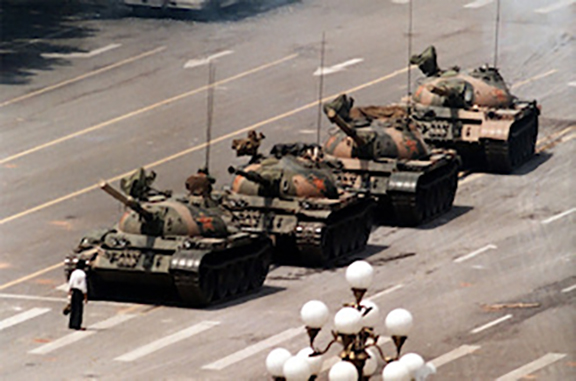
Very few people knew his name or anything about his life. But the man who stared down a column of tanks near Tiananmen Square on June 5, 1989, days after the Chinese military killed at least hundreds, became a global phenomenon. The Tank Man put himself in between an approaching tank, with a line of 17 more thanks behind it. He was wearing a white shirt and slacks and holding what looks like a shopping bag. The tank tries to swerve, and the man steps in front of it. As the story goes, he clambered up onto the tank and said, “Why are you here? My city is in chaos because of you.” When he stepped back down in front of the tank, two men ran into the street and pulled him away.
Over two decades later, the man’s identity is still unknown. Some believe he was executed or detained — thousands of Chinese nationals faced similar fates for their involvement in the protests. But the image that remains is one of the most enduring images of the pro-democracy, anti-corruption protests that swept China that spring and summer. The Tank Man also became a symbol against oppression worldwide.
Rosie the Riveter
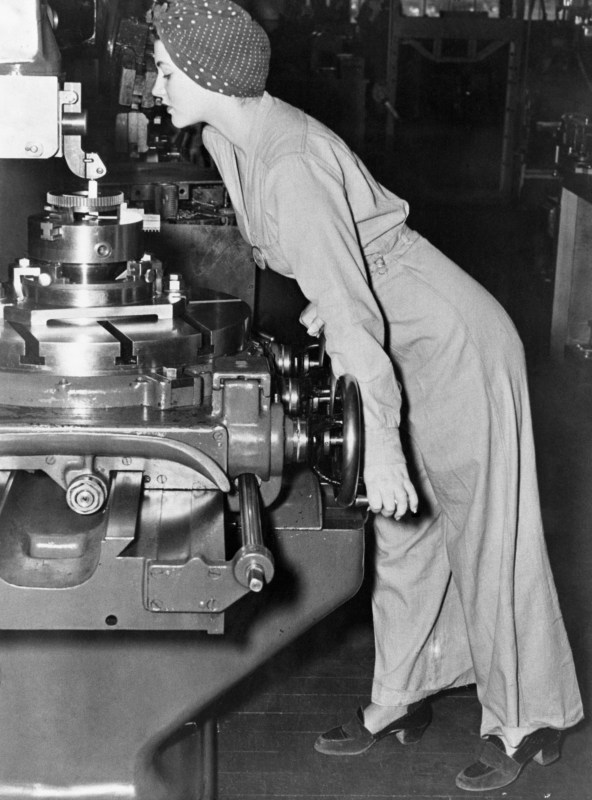
The real Rosie the Riveter was a California waitress named Naomi Parker Fraley. Many women have been identified as the model for Rosie, the war worker of 1940s pop culture who became a feminist touchstone, so Fraley was unrecognized for more than 70 years. Her connection to Rosie first became public in 2016. That year, Fraley told People, “I didn’t want fame or fortune. But I did want my own identity.”
“It turns out that almost everything we think about Rosie the Riveter is wrong,” that scholar, James J. Kimble, told The Omaha World-Herald in 2016. “Wrong. Wrong. Wrong. Wrong. Wrong.” Kimble went searching for the real riveter, who had long been thought to be Geraldine Hoff Doyle, a Michigan woman.
The poster everyone knows shows a young woman in a work shirt and a polka-dot bandana. She’s flexing her arm and declaring, “We can do it!” It was created by Pittsburgh artist J. Howard Miller and was never meant for public display, it was just supposed to deter strikes during wartime. But in the 1980s, a copy came to light, most likely from the National Archives in Washington, and the photo quickly became a feminist symbol. Doyle worked briefly as a metal presser in a Michigan plant and — in good faith — claimed to be the woman in the poster, mainly based on a 1942 newspaper photograph circulated by the Acme photo agency. It showed a young woman at an industrial lathe with her hair in a polka-dot bandanna. Doyle thought it looked like her, and was credited with being Rosie until her death. But then came Kimble, who went on a six-year journey to find the real Rosie: Naomi Parker Fraley.
After the Japanese attacked Pearl Harbor, Fraley, 20 at the time, and her sister went to work at the Naval Air Station in Alameda. They were assigned to the machine shop, and had to do tasks such as drilling, patching airplane wings and, not surprisingly, riveting. It was there that the Acme photographer took the picture of Parker, her hair tied up in a bandana, for safety, stationed at her lathe. She clipped the photo and kept it for decades. She then worked as a waitress, got married and had a family. She did finally notice that Doyle was accepted as the model for Rosie. Fraley notified the National Park Service, which runs the Rosie the Riveter Park in Richmond, California. But nothing was done until 2015 when Fraley met Kimble, who definitively linked her to Rosie the Riveter.
Edith Lee-Payne
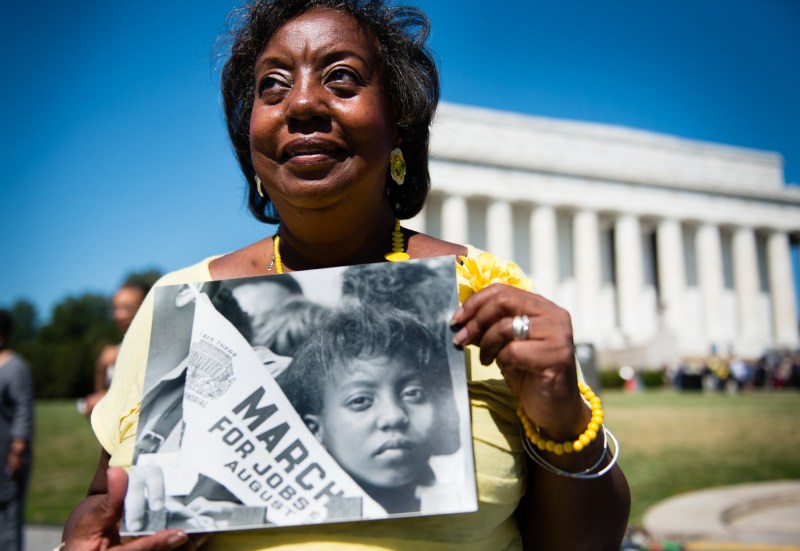
On her 12th birthday, Edith Lee-Payne became the face of the Aug. 28, 1963, March on Washington, where Martin Luther King Jr. gave his historic “I Have a Dream” speech. In the photograph of her that spread around the U.S., Payne’s face is innocent and her gaze earnest, and she is set against a banner demanding “jobs and freedom.” Her eyes captivated a generation that was seeking racial and economic justice. The photo was taken by Rowland Scherman, and it was his first shoot for the United States Information Agency. The 26-year-old climbed up on top of the Lincoln Memorial and found Lee-Payne’s face in the crowd.
“I saw this beautiful face in the crowd, then — click, click — and 50 years go by,” Scherman, now 80 and living in Massachusetts, said to Mic. “It was one lucky shot … She was so beautiful. That’s why I photographed her — a totally mesmerizing 12-year-old with a face like an artist’s model.”
As she grew up, Lee-Payne devoted her life to activism. She fought to integrate schools in Prince George’s County, Maryland, in the late 1970s, and was appointed as a liaison between the community and policy department.
She moved back to her hometown of Detroit in 1983. At 66, she still serves on the board of her local precinct, which advocates with the groups Coalition Against Police Brutality and Parents for Quality Education. She was the lead plaintiff in the successful repeal of the first Emergency Manager Law, which was believed to disproportionately target black communities. According to Mic, she was the 2017-18 ambassador for nonviolence at the National Alliance of Faith and Justice, a nonprofit association of criminal justice professionals and community leaders, which promotes faith in addressing crime prevention.
She only learned she was the poster child for the civil rights movement in 2008 when her cousin discovered the image on a black history calendar. She and Scherman met in 2013 in Washington when BBC asked them both to be in a documentary film about the march. Lee-Payne has enjoyed her fame, but says that the fight for black equality is never-ending.
“People compartmentalize the black struggle into one month in February,” she said. “But it’s 12 months out of the year, 52 weeks, seven days, and 24 hours a day that we deal with our civil rights.”
This article appeared in an InsideHook newsletter. Sign up for free to get more on travel, wellness, style, drinking, and culture.














